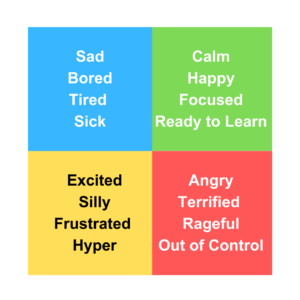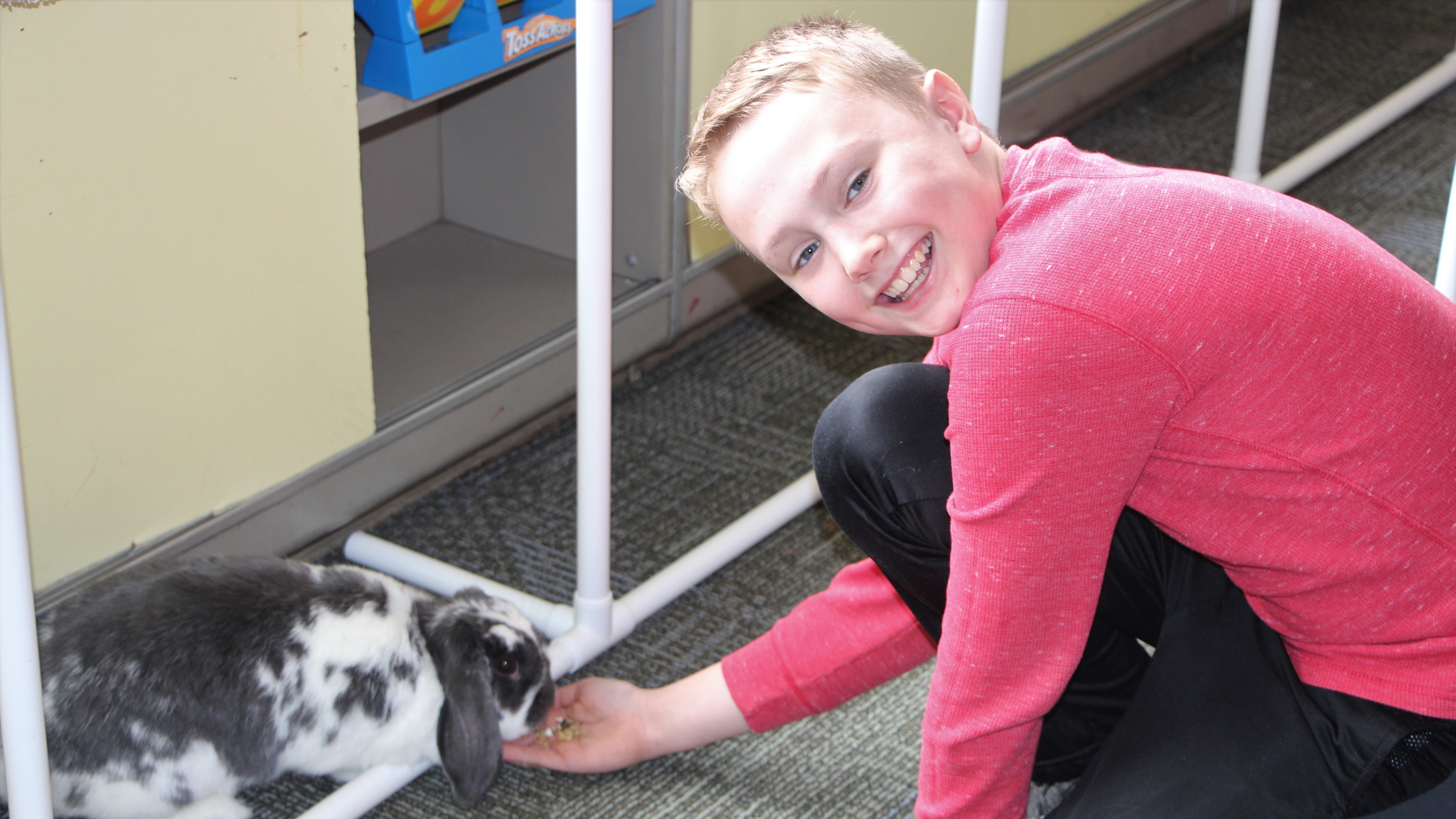Animal-assisted therapy is an intervention in which each interaction aims to address a clear goal. Maggie Bago has always known that animals have a positive effect on emotional well-being, even before she knew the specifics. She began her time at PEP as an associate teacher counselor and quickly recognized the value of animal relationships on the students.
“I noticed that so many of my kids included animals as part of their safety plan. When they felt overwhelmed, they would pet their dog or cuddle with their cat to calm down,” Bago explained.
It didn’t take her long to decide to pursue certification in animal-assisted therapy. Now, in her third year as an animal-assisted therapist at Willow Creek, Bago has partnered with Mary Bonamer, Ph.D., clinical coordinator, to collect data to clarify the impact of AAT on students.
Data Collection

For each of the seven students participating in the data collection, Bago recorded three measurements before and after their sessions with Scooter, the program’s dog.
- Intensity of Emotion – Students self-identified their emotion (anger, depression, anxiety or hyper) and how strong it was on a scale of 1-5.
- Zone of Regulation – Students self-identified their “zone” of regulation ranging from green (happy/calm) to red (mad/angry). (See Figure 1.)
- Heart Rate
Findings
The findings confirmed what Maggie had suspected from the start. Animals – in this case, a dog – have a positive effect on students. The data was positive for all three areas measured. Specifically, the research indicated:
- Intensity of Emotion – AAT reduced emotional intensity or helped it remain at the lowest level (one) for 100 percent of students. For 71 percent, AAT reduced emotional intensity and for 29 percent AAT helped it remain at a one.
- Zone of Regulation – Students identified as being in the “green zone” 83 percent of the time after a session of AAT.
- Heart Rate – Average heart rate decreased for 57 percent of students.
These findings are an important first step in demonstrating the benefit of AAT. “We had a lot of anecdotal evidence that AAT was helpful for our students, but we hadn’t collected any data to verify that,” said Bonamer. “These findings suggest goal-oriented animal-assisted therapy helps children get in the right mindset to learn.”
Bago is pleased, but not surprised by the results. She sees the data as validating what she already knows from working with the kids each day. “It was exciting to see the data turn out the way it did. There was never a negative correlation. We collected data on kids age 6-18 and it didn’t matter. It made a difference for everyone.”
Bago has continued the data collection project on a new cohort. So far, the findings are similar to those in the first group. The current data collection period will run through the end of January.
For more information on animal-assisted therapy, contact Mary Bonamer via email.
